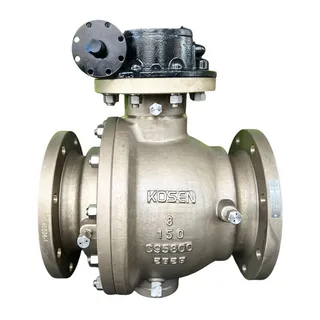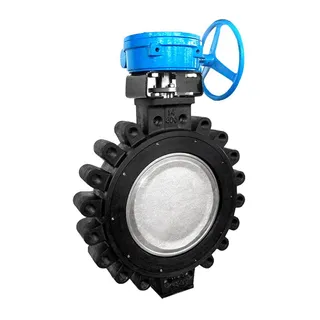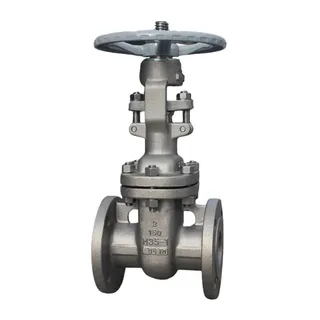In the industrial field, cryogenic valves play a vital role. Whether in LNG receiving terminals or in other locations where extremely low-temperature fluids must be handled, the performance of cryogenic valves is directly related to the safety and efficiency of the entire system. However, due to the extremely low operating temperature, the design and manufacture of cryogenic valves face a series of complex technical challenges, including material selection, low-temperature sealing, structural design, solution treatment, cryogenic treatment, insulation, quality inspection, maintenance, and safety.
To ensure that these valves can operate reliably under extreme conditions, a series of strict international standards have been established, such as BS 6364 "Cryogenic Valves" and MS SSP-134 "Requirements for Cryogenic Valves and Their Extended Bonnet/Body". These standards comprehensively specify the key points and rules of cryogenic valve design and manufacture.
When designing cryogenic valves, in addition to following the general design principles of valves, the special requirements brought by the cryogenic environment must also be considered.
First, the valve must not become a significant heat source of the cryogenic system. The inflow of heat not only reduces the thermal efficiency of the system but may also cause rapid evaporation of the internal fluid, resulting in abnormal pressure rise and consequent danger. Therefore, valve design must minimize heat inflow as much as possible.
Second, cryogenic media must not have a harmful effect on handwheel operation and packing sealing performance. Valve components that directly contact cryogenic media should have explosion-proof and fire-proof structures to prevent accidents in cryogenic environments. In addition, since lubricants cannot function properly at low temperatures, structural measures must be taken in valve components to prevent frictional parts from scratching.
During the design process, besides considering general requirements such as flow capacity, other indicators must also be addressed, such as rationality of energy consumption, insulation performance, cooling performance, operating performance of opening and closing seals, and conditions preventing surface frosting. These indicators together determine the technical level of cryogenic valves.
The sealing performance of cryogenic valves is one of their core indicators. Factors affecting valve sealing mainly include sealing pair structure, specific sealing pressure, physical properties of the medium, and the quality of the sealing pair. Only by truly understanding the principle of valve sealing and fully considering these factors can leakage be effectively prevented and sealing performance ensured.
The quality of the sealing pair is one of the key factors affecting sealing performance. Taking ball valves as an example, the roundness of the ball and the surface roughness of the sealing face between the ball and the seat are important indicators. The roundness of the ball directly affects the fit between the ball and the seat. If the fit is high, the resistance of fluid moving along the sealing surface increases, thus improving sealing performance. Generally, the ball roundness is required to reach grade 9.
The surface finish of the sealing face also has a very significant impact on sealing. When the finish is low and the specific pressure is small, leakage increases. When the specific pressure is large, the influence of finish on leakage decreases significantly because the microscopic serrated peaks of the sealing surface are flattened. The influence of surface finish on soft seals is much smaller than on rigid metal-to-metal seals.
According to sealing theory, only when the gap between the sealing pairs is smaller than the fluid molecule diameter can leakage be prevented. Theoretically, the gap preventing fluid leakage must be smaller than 0.003 μm. However, even finely ground metal surfaces still have peak heights exceeding 0.1 μm, which is about 30 times the diameter of a water molecule. Therefore, it is difficult to improve sealing performance solely by improving surface finish. The quality of the sealing pair not only affects sealing but also directly affects the service life of the ball valve, so manufacturing must strictly improve sealing pair quality.
Specific sealing pressure refers to the pressure acting on the unit area of the sealing surface. It is generated by the pressure difference before and after the valve and by externally applied sealing force. The magnitude of specific pressure directly affects sealing, reliability, and service life. Leakage is inversely proportional to pressure difference. Tests have shown that under the same conditions, leakage is inversely proportional to the square of the pressure difference; thus, as the pressure difference increases, leakage decreases.
However, the sealing pressure applied to the ball cannot be too large. Although high pressure is beneficial for sealing, it increases valve operating torque. Therefore, reasonable selection of specific sealing pressure is a prerequisite for ensuring cryogenic ball valve sealing performance.
The permeability of the fluid is closely related to its viscosity. With all other conditions the same, the higher the viscosity, the lower the permeability. The viscosity of gases is dozens of times smaller than that of liquids, so gases permeate more easily than liquids. Saturated steam is an exception, as it is relatively easy to seal. Compressed gases are more prone to leakage than liquids.
Fluid permeability also depends on viscosity changes caused by temperature changes. Gas viscosity increases with rising temperature, being proportional to the square root of temperature. Liquid viscosity, on the contrary, decreases sharply as temperature rises, being inversely proportional to the cube of temperature. In addition, dimensional changes of parts caused by temperature change will alter sealing pressure in the sealing zone, thus damaging the seal. This effect is particularly significant for cryogenic fluids because sealing pairs in contact with the fluid are usually at lower temperatures than the stressed parts, leading to shrinkage and loosening of the sealing pair components. At low temperatures, sealing becomes more complex, as most sealing materials fail. Therefore, temperature effects must be considered when selecting sealing materials.
The influence of surface hydrophilicity on leakage mainly comes from capillary characteristics. When a thin oil film covers the surface, it destroys hydrophilicity and blocks fluid channels, requiring a higher pressure difference for fluid to pass through capillaries. Thus, some ball valves use sealing grease to improve sealing and service life. When using grease sealing, attention must be paid to replenishing grease if the oil film decreases. The grease used must be insoluble in the medium and should not evaporate, harden, or undergo other chemical changes. However, sealing grease is unsuitable for cryogenic ball valves because most greases vitrify at cryogenic conditions.
Since sealing pairs are not absolutely rigid, their structural dimensions change under sealing force or temperature variation, altering the interaction force between sealing pairs and reducing sealing performance. To compensate, sealing elements should have some elastic deformation ability. At present, some ball valve seats adopt structures with elastic compensation or metal elastic support, and some balls adopt elastic ball structures. These designs are all intended to improve sealing performance.
The width of the sealing surface determines the length of the capillary channel. Theoretically, as the width increases, the distance fluid travels along the channel increases proportionally, while leakage decreases inversely. However, in practice, this is not the case because sealing surfaces cannot fully match, and after deformation, not all width contributes effectively to sealing. Moreover, increasing surface width increases required sealing force. Therefore, rational selection of sealing surface width is very important.
Cryogenic ball valves generally use PCTFE sealing rings. However, the linear expansion coefficient of PCTFE at low temperature is much higher than that of metals. Therefore, at cryogenic temperatures, PCTFE rings shrink, reducing their size, which lowers specific sealing pressure with the ball and creates leakage channels between the ring and seat. Thus, the dimensions of PCTFE rings are critical to cryogenic ball valve sealing. In design, dimensional shrinkage at low temperatures must be considered, and cold-assembly technology must be used.
For the common internal leakage phenomena of cryogenic ball valves at LNG receiving terminals, based on cryogenic valve design criteria and sealing theory, sealing performance can be analyzed from the factors of sealing pair quality, specific sealing pressure, fluid physical properties, and the structure and dimensions of sealing pairs.
Sealing Pair Quality – Ball roundness and sealing surface roughness directly affect sealing performance. During manufacturing, roundness must be strictly controlled to meet grade 9, and surface finish must meet design requirements to reduce leakage.
Specific Sealing Pressure – Rational selection of specific sealing pressure is key. In design, sealing pressure must be calculated based on working conditions to ensure sealing performance without excessively increasing operating torque.
Fluid Physical Properties – The fluid’s viscosity and its variation with temperature significantly affect sealing. For cryogenic fluids, materials that can maintain sealing properties at low temperatures must be chosen.
Structure and Dimensions of Sealing Pairs – The design must consider elastic deformation, using structures with elastic compensation or metal elastic support, and rationally selecting sealing surface width to balance sealing performance and operating force.
Other Factors – Additional influences include ball stiffness, concentricity between the ball center and seat sealing surface during assembly, etc. All must be considered in design and manufacturing to ensure sealing performance.
The design and manufacture of cryogenic valves is a complex and challenging task involving multiple technical difficulties. By strictly following international standards such as BS 6364 and MS SSP-134, and by fully considering factors such as sealing pair quality, specific sealing pressure, fluid physical properties, and sealing pair structure and dimensions, the sealing performance of cryogenic valves can be effectively improved. In practical applications, continuous experience accumulation, design optimization, and manufacturing process improvement are necessary to ensure cryogenic valves operate reliably under extreme conditions and provide safety assurance for industrial production.



